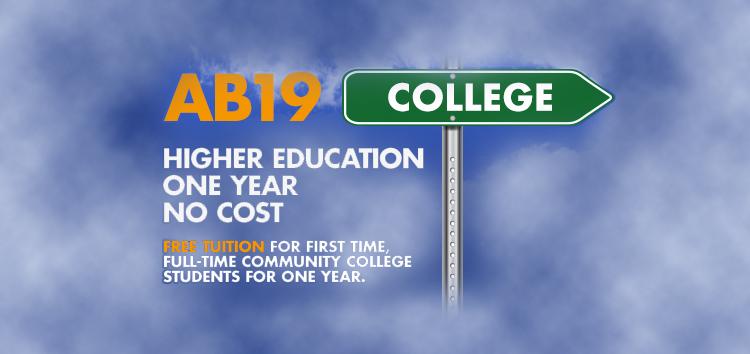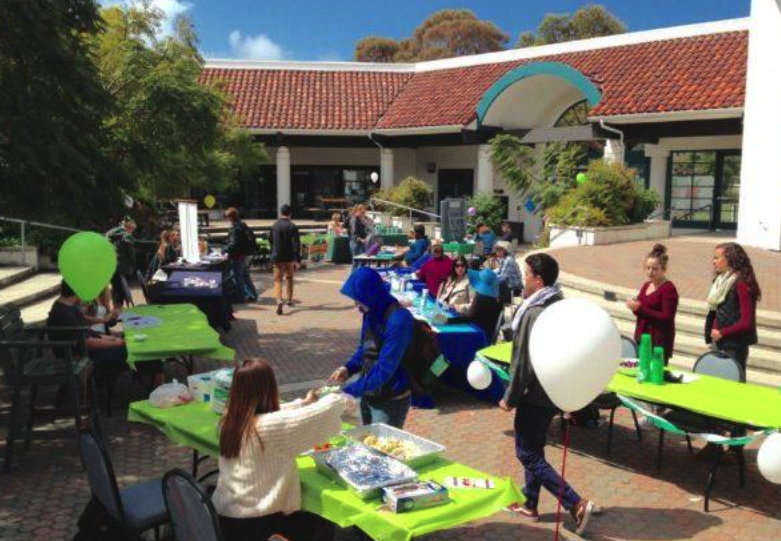By Garrett Smiley
Editor-in-chief
For the first time in four decades, students at community colleges throughout California may receive free tuition for their first year — a decision that is now in the hands of Gov. Jerry Brown.
The bill could increase the size of the student body at Cuesta College, as its purpose is to drive people to join the future workforce.
“As a former President of the largest community college district in the nation, and as someone who heavily relied upon financial aid in college myself,†Assemblymember Miguel Santiago said. “I know how important affordability is to students.â€
Assembly Bill 19 would mean a year of free tuition for first time students in community colleges all around California. The bill would create the Community College Promise Program, which provides free tuition to “first-time, full-time in-state students,†who are taking 12 units or more.
The Community College Promise Program is different from the Cuesta Promise, which provides a “fee-free first year†for local high school graduates.
The State Assembly gathered on Sept. 13, to discuss the details of the bipartisan bill.
According to multiple news sources, California could be upwards of 1 million college-educated workers short of demand in 2025.
AB 19’s purpose is to preemptively meet that demand before the shortage of “college-educated workers†becomes an issue by getting more people in California through college and into the workforce.
“Financial challenges should not keep low-income Californians from pursuing better futures,†Assemblymember David Chiu said. “All students deserve an affordable college education.â€
The purpose of AB 19, according to these two assemblymembers, is a practical one and a moral one. Not only will the bill meet economic demands of the future, but will also provide opportunity for future students to get a headstart.
The bill also seeks to “Increase the percentage of high school graduates who are placed directly into transfer-level Mathematics and English courses at a community college,†if the bill were amended.
According to the Cuesta College Student Success Scorecard, 76.7 percent of students that are “prepared students†graduate or transfer, while around 60 percent of students that are unprepared do not.
A “prepared student†is defined as a student who takes “transfer-level courses†in math and english their first year in college, while “unprepared students†take remedial courses.
AB 19 would increase the number of prepared students coming into the college from high school and by default increase the number of graduations or transfers.
California has had free tuition to schools of higher education in its past. In 1960, the California Master Plan for Higher Education required that tuition at schools of higher education, UC’s and CSU’s.
Students would only be required to pay for “auxiliary costs,†which include dormitories, parking and recreational facilities.
The Master Plan, which made college in California free to its residents, has been amended extensively since 1960, with significant changes happening in the 1980’s and 1990’s because of state general fund reductions, thus eliminating the “no-tuition†policy of the state.
The re-introduction of tuition was also accompanied by an increase in student financial aid.
Programs similar to this one in California, like the Long Beach and Ventura Community Colleges, have seen increases in success among Promise recipients.
“Long Beach Promise students who successfully completed transfer-level math and transfer-level English increased by 200% and 500%, respectively,†according to CAPPA Advocacy, a non-profit organization that advocates free tuition in California.
“After a period of nine years, nearly half of all Ventura Promise students reported that they would not have attended college without the program,†CAPPA also found.
Correction: Previously stated was that the Cuesta Promise provided a “fee-free first semester” instead of  a “fee-free first year.”















